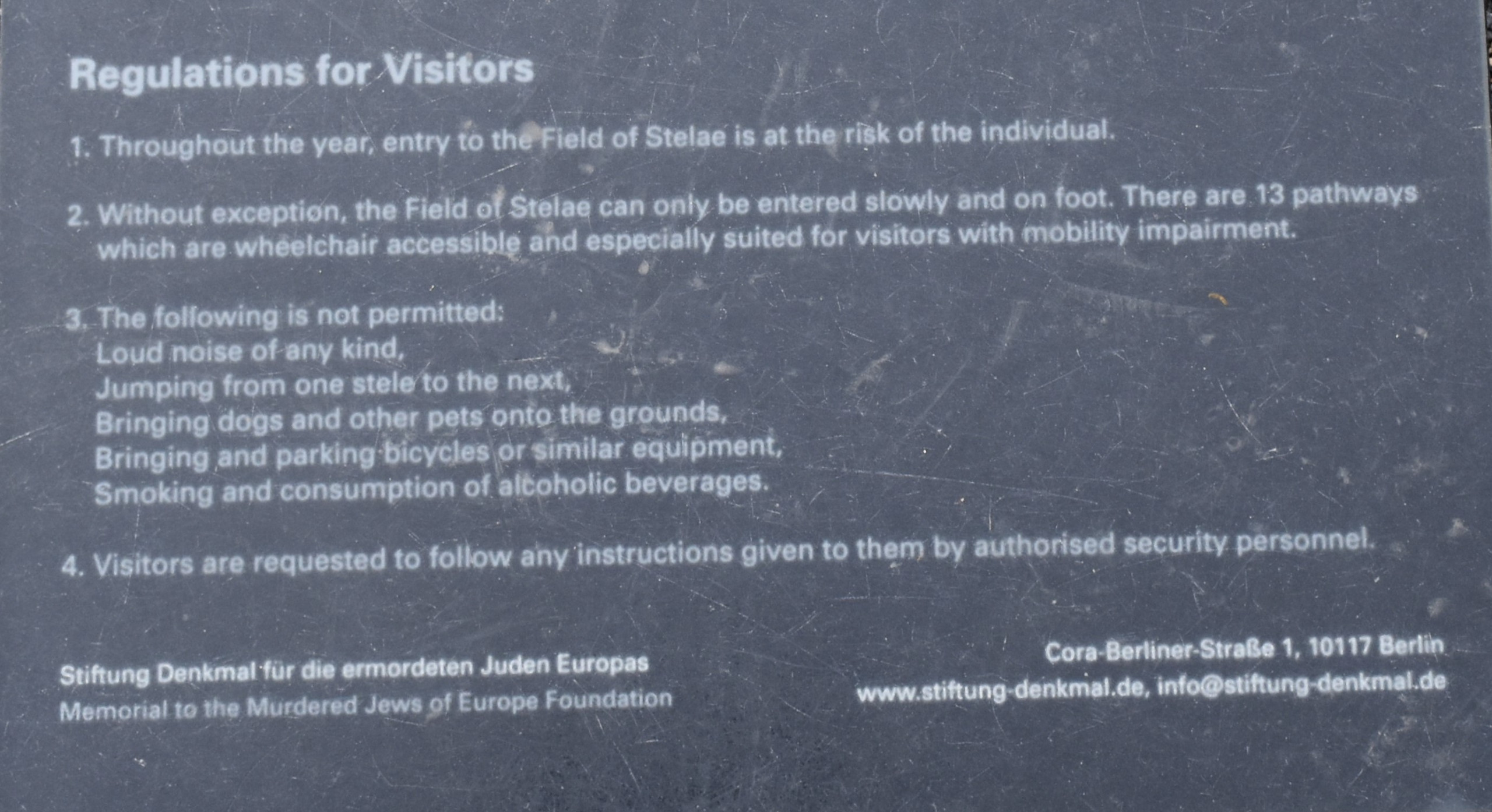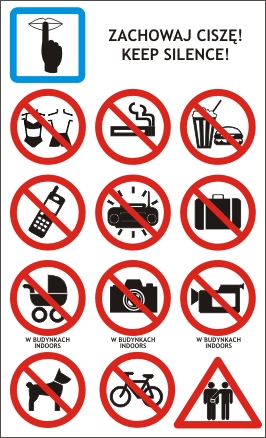This website uses different cookies. We use cookies to personalize content, provide social media features, and analyze traffic to our website. Some cookies are placed by third parties that appear on our pages. You can find more information and options to choose from in our Privacy Policy and Configurations for usage.
- Instructions for visiting memorial sites
- Memorial sites as places of reflection and respect: how to behave
- Official rules and regulations
- Things to remember: a final checklist
- Understanding rules: a short exercise
Instructions for visiting memorial sites
Маркус Чавас Civil Society Forum e.V., Берлін, Германія / Ганна Скендзель Каманда тэхнічных і агульнаадукацыйных школ №2, Катавіцэ, Польшча
Naturally, different types of memorial site require different kinds of preparation. This short chapter gives a general overview of things that should be considered when preparing a visit. We leave it up to the discretion of the teacher to decide which points apply to a given visit.
Memorial sites as places of reflection and respect: how to behave
It can be a good idea to ask students before the visit how they think they should behave there. This question is a good starting point for a discussion about behaviour and any official regulations at the site, while giving students the initiative in the discussion. The following points may not be official rules, but they are important behavioural aspects that need to be discussed.- Many sites exist to commemorate the dead, for example war memorials, concentration camps, or simple plaques dedicated to individuals, such as the Stumbling Stones. It is a general rule of thumb that the correct way to pay respect at these places is to remain silent in private reflection. Depending on age and personality, many school-age students might find this difficult, but they should be made aware of the expectation. For the same reason, students should refrain from running and playing at such memorial sites; they should respect all parts of the monument and stick to marked paths where necessary. A memorial site is not the same as a park, even if it sometimes may look like one. A useful comparison is to use the example of a graveyard: how would the students behave there?
- Students should be informed that there are times and places to ask questions, and that these moments are not always during the visit. Depending on the pedagogical recommendations, the best time to ask questions might be during the journey back from the memorial site, back in the classroom, or it may be appropriate for questions to be asked throughout the visit. The teacher should make these boundaries clear in advance.
- It is likely that there will be other groups or visitors at the memorial site during the visit. Students should not only respect the site itself, but also other visitors. This includes keeping quiet and not disturbing others, sticking together or with the group, listening to and following the guide, and showing a respectful attitude. Bear in mind that people could be paying personal respects to relatives, for example.

Official rules and regulations
Most memorial sites have their own rules and regulations, which should also be followed. It is the responsibility of the teacher to be aware of these and inform the class before the visit. See below an exercise that can be used to help students think about what kind of rules might be in place and, more importantly, why these rules exist. Such rules could concern, for example:- Wearing appropriate clothing – for the weather, but also for the culture or religion
- Taking photos
- Using mobile phones
- The size of luggage allowed
- Eating or drinking
- Listening to music
- Riding a bicycle


Things to remember: a final checklist
For the organiser of a visit, there are also a number of formalities that must be considered when planning, for example:- Is the site inside or outside?
- Is the site public or private?
- Do you have to make an appointment to visit?
- Is the site free or do tickets need to be bought?
- How long will the visit take, including travel time?
- Is it mandatory to have a guide?
- From what age is it appropriate to visit the site?
- Is the site accessible to disabled people?
- Are there any documents that need to be brought?
Understanding rules: a short exercise
The following short exercise (15-20 minutes) can be used in preparation for a visit to a place where rules and regulations are in place. It is designed for students to understand why such rules exist.- In pairs, students should come up with 5 rules that they might expect to be in place at the memorial site they will visit.
- Then, each pair teams up with another pair (using the snowball method), compares answers and compiles a list of 5 rules that they all agree upon.
- After each group has 5 rules, they should then look at each rule in turn and add “because…” after it, e.g. “Don’t interrupt the guide, because…”. Thinking about why a rule is in place will help them to understand the necessity of following it.
- Finally, each group chooses a representative who reads the group’s set of rules to the class.
Дадатковыя
матэрыялы
ўрока
Пачатак і заканчэнне Другой сусветнай вайны
Дзеці ў гады Другой сусветнай вайны
Памяць і мемарыялізацыя Другой сусветнай вайны ў розных краінах
Гвалтоўны ўгон моладзі на працу ў Германію падчас Другой сусветнай вайны
Змена дзяржаўных межаў у выніку Другой Сусветнай вайны
Наступствы Другой сусветнай вайны